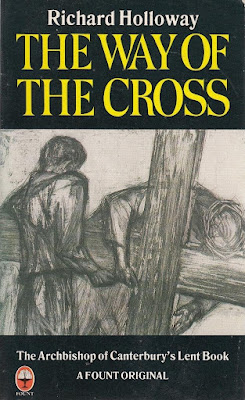A New Name: Septology VI-VII
Author: Jon Fosse, Translated from the Norwegian by Damion Searls
Publisher: Transit Books, paperback, 197 pages
Reviewed by Rev. Garth Wehrfritz-Hanson
The Author
Jon Fosse, was born on the west coast of Norway and is the recipient of countless prestigious prizes, both in his native Norway and abroad—including the 2023 Nobel Prize in Literature. Since his 1983 fiction debut, Raudt, svart [Red, Black], Fosse has written prose, poetry, essays, short stories, children’s books, and over forty plays, with more than a thousand productions performed and translations into fifty languages. A New Name is the final volume in Septology, his latest prose work, published in three volumes by Transit Books.
Brief Observations
This novel—which, at times seems like poetic-prose—is written in what I would categorize as a non-traditional, minimalistic genre. Fosse employs long paragraphs throughout the novel—it begins with about a 3 page paragraph, and ends with around a 4 page paragraph—he only uses commas and question marks, and does not use periods or quotation marks. If you look in a dictionary, you will not find the word “Septology.” I take it to mean Fosse’s exploration of the meaning and mystery of human life. Asle and Asle are doppelgängers, possibly Gura and Gura might be too. The novel abounds with repetitive words, phrases, thoughts, memories, etc. One of Fosse’s favourite repetitions involves the main protagonist, Asle, looking out the window at the Sygne Sea.
The novel takes place in western Norway. Asle and Asle are both artists. Åsleik is a farmer-fisher, friend and neighbour of Asle. The two of them prepare for their boat trip, and eventually travel over to Åsleik’s sister’s place to celebrate Christmas Eve. Åsleik comes across as somewhat superstitious and a misogynist in that he thinks suitcases and women bring bad luck while travelling in a boat.
The one Asle was married and divorced twice, his first wife was Liv, and second wife was Siv, who also was an artist. The other Asle eventually marries Ales, and both of them are artists. They both attend and later drop out of art school. Asle drops out because he and his teacher realize that he is such an accomplished painter that there is no more he can learn from his teacher. Ales drops out because she wants to study icons and paint them. Ales is a devout Catholic, and Asle converts to Catholicism. Throughout the novel, the Lord’s Prayer, the Apostles’ Creed, the Ave Maria, the shorter Gloria, and the Salve Regina are prayed by Asle in Latin. Asle is influenced by the mystic Meister Eckhart.
Beyer runs the Bjørgvin art gallery, and eagerly displays Asle’s paintings, thinks they are brilliant works of art, and sells them to customers. Asle thinks his paintings are prayers, confession and penance, and so is all good art and poetry.
The novel moves back and forth to various times, places and events in the life of the characters. Asle rambles on in a variety of directions—reminiscing, thinking, questioning, remembering, hoping about the meaning of art, poetry, music, the existence and nature of God, life, death, grief, free-will, suffering, and on one occasion states: “but there’s one thing I’m sure of and that’s the greater the despair and suffering is, the closer God is” (p. 61).
From my humble point of view, this novel gets rather tedious with countless repetitions of words and phrases, and its seemingly fragmented nature, going off in so many different directions without coherent connections, that it makes it difficult to piece together and make sense of a lot of the content. Two-and-one-half out of five stars.













